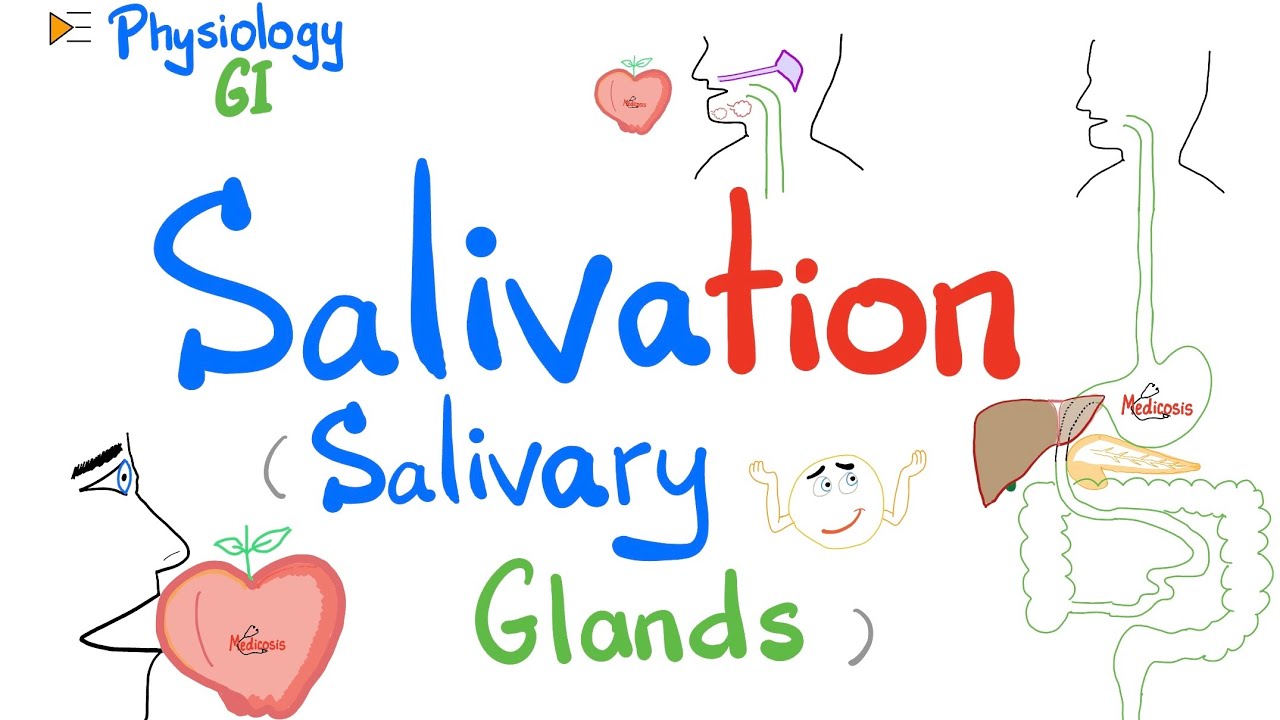Introduction to Saliva and its Functions
Summary
TLDRThis video from the Dental Education Hub introduces the essential role of human saliva in oral health and digestion. It explores the composition of saliva, which consists of 99% water and a variety of electrolytes, proteins, and organic molecules. The video explains saliva's critical functions, such as aiding digestion, lubricating food, and protecting teeth through remineralization. Additionally, saliva helps maintain microbial balance in the mouth with its antimicrobial, antifungal, and antiviral properties. Viewers will gain a comprehensive understanding of how this remarkable fluid supports overall oral health.
Takeaways
- 😀 Saliva is primarily composed of 99% water and 1% electrolytes, proteins, and other organic and inorganic components.
- 😀 The average human saliva flow rate ranges from 600 to 1000 ml per day, with variations depending on the time of day and stimulation levels.
- 😀 Saliva pH is typically neutral, ranging from 6.7 to 7.4.
- 😀 Key electrolytes in saliva include sodium, potassium, chloride, bicarbonate, calcium, magnesium, and fluoride.
- 😀 Saliva contains proteins like amylase, mucins, and immunoglobulins, including the primary secretory immunoglobulin, IgA.
- 😀 The main functions of saliva are related to food processing, dental health, and maintaining microbial balance in the oral cavity.
- 😀 Saliva helps in food digestion by providing lubrication and aiding in the breakdown of starch and fat through enzymes like amylase and lipase.
- 😀 It plays a crucial role in protecting teeth by promoting remineralization and preventing demineralization with calcium, fluoride, and phosphate.
- 😀 Saliva supports microbial balance in the mouth with antimicrobial properties, including antibacterial, antifungal, and antiviral activities.
- 😀 The presence of mucins in saliva aids in lubrication and protecting mucosal surfaces from injury and microorganisms.
- 😀 The buffering action of saliva, facilitated by carbonic anhydrase and bicarbonates, helps neutralize acids and maintain oral pH stability.
Q & A
What is the main composition of human saliva?
-Human saliva is primarily composed of 99% water. The remaining 1% consists of various electrolytes, proteins, peptides, immunoglobulins, and organic molecules.
How much saliva does the human body produce in a day?
-The human body produces between 600 to 1,000 mL of saliva per day, or 0.6 to 1 liter.
What factors influence the flow rate of saliva?
-Saliva flow rate varies throughout the day. Stimulated saliva, produced in response to food or other stimuli, flows at a rate of 2 to 5 mL per minute. In contrast, the flow rate is much slower during resting or nighttime conditions, typically 0.2 to 0.4 mL per minute.
What is the typical pH range of human saliva?
-The pH of human saliva is generally neutral, ranging from 6.7 to 7.4.
What are the primary electrolytes found in saliva?
-The primary electrolytes present in saliva include sodium, potassium, chloride, bicarbonate, calcium, magnesium, and fluoride.
What role do mucins play in saliva?
-Mucins in saliva help with lubrication, allowing the formation of a food bolus and easing the swallowing process. They also coat the tissues in the mouth to protect them from injury and microorganisms.
What proteins are involved in the digestion of food in the mouth?
-Saliva contains amylase, which helps digest starch, and lipase, which begins the breakdown of fats in food.
How does saliva protect teeth from decay?
-Saliva helps clear food particles from the surfaces of teeth and prevents demineralization. It also contains calcium, fluoride, and phosphate, which aid in the remineralization of early carious lesions.
Which immunoglobulin is most abundant in human saliva, and what is its role?
-IgA is the most abundant immunoglobulin in human saliva. It plays a critical role in immune defense by binding to and neutralizing microorganisms, preventing their attachment to tissues and helping eliminate them from the body.
How does saliva contribute to maintaining the microbial balance in the oral cavity?
-Saliva contains antimicrobial components such as enzymes, antibodies, and proteins that fight bacteria, fungi, and viruses. It helps prevent infections by neutralizing pathogens and maintaining oral hygiene.
Outlines

このセクションは有料ユーザー限定です。 アクセスするには、アップグレードをお願いします。
今すぐアップグレードMindmap

このセクションは有料ユーザー限定です。 アクセスするには、アップグレードをお願いします。
今すぐアップグレードKeywords

このセクションは有料ユーザー限定です。 アクセスするには、アップグレードをお願いします。
今すぐアップグレードHighlights

このセクションは有料ユーザー限定です。 アクセスするには、アップグレードをお願いします。
今すぐアップグレードTranscripts

このセクションは有料ユーザー限定です。 アクセスするには、アップグレードをお願いします。
今すぐアップグレード関連動画をさらに表示

Digestion in the Mouth

Digestion - What Is It? | Physiology | Biology | FuseSchool

Salivation (Salivary glands: Parotid, Submandibular, Sublingual) | GI Physiology

June 2024 Delta Dental Minute, Delta Dental of Arkansas Foundation, Lanier, Bodenner

Action of saliva on starch | Digestion | Biology

MICROBIOLOGIA BUCAL- Biofilme dental
5.0 / 5 (0 votes)
